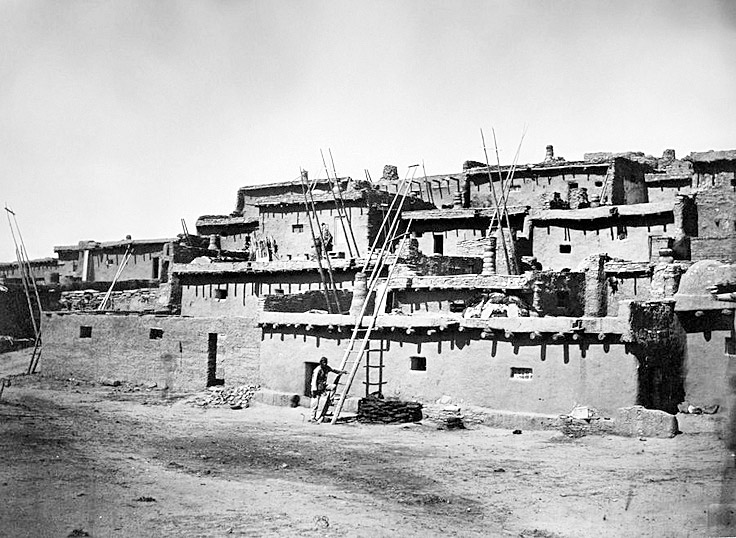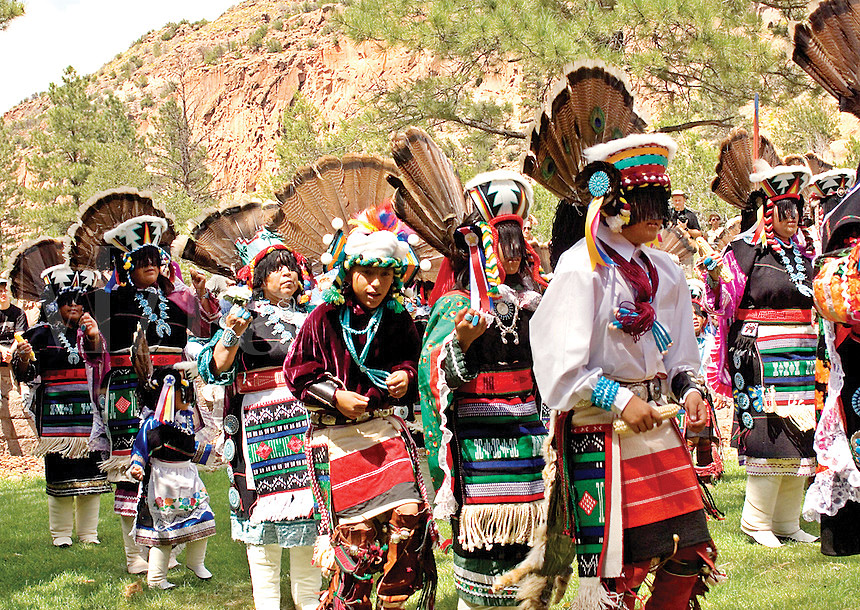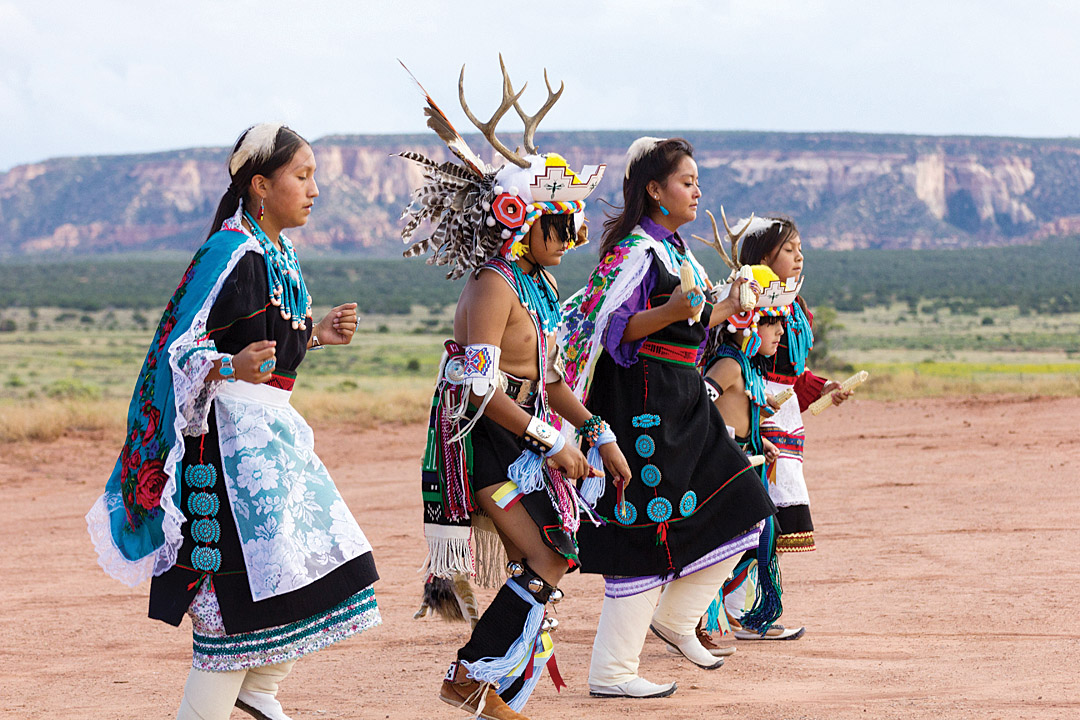(Zuni dance group)
Jumping in and discussing an unfamiliar subject, Zuni artwork for instance, is like telling a newcomer from the Amazon about powder conditions on Mt. Bachelor and snowboard racing. While art or an exotic sporting event can be a portal for visualizing the beyond, context about what’s viewed reduces confusion.
However, there are times when contextual facts aresparse, asis the case with both the history and culture of the Zuni Pueblo. This type of paradigm then offers something rare—a true enigma.
Some cultures hold a much different perspective from ours regarding—sharing, privacy and what we call transparency, both at the individual and societal level. The Zuni People of New Mexico have an obscure origin; they prefer to remain mute on understandings about various topics. So-called facts about their spiritual matters are recorded but are far from complete, to the dismay of researchers.
An example of all this is their language, A:Shiwi. It has no known lineage or family member, thus making it a language isolate. They have been their own People for at least 7,000 years, similar to the Basques of Western Europe.
Many of the facts that we do know about the Zuni can be fairly peculiar to us — they are a matriarchal society; women own all property and material wealth along with lineage rights. When a marriage occurs, the husband moves to, lives with and becomes part of the wife’s family.
Estimates are that eighty percent of all households have at least one family member who is a stone/wood carver, jeweler, potter or painter; most have more than one. This makes the community, per capita, perhaps the richest artist enclave in the United States. The people that the Zuni sometimes identify with culturally and spiritually are the Hopi, yet, their languages are altogether different.

Finally, the Zuni have long had the reputation as being exceptional, proud warriors; they fended off incursions for millenniums and most recently turned back the Navajo, Apache and Spanish. So nothing intrudes with any depth upon them, their lands or the culture with the exception, maybe, of love.
Forty years ago, a young Navajo woman attending the University of New Mexico went to the Pueblo for a weekend stay with her newly found Zuni girlfriend. She never left. Considering that the Navajo are also a matriarchal society, it does not happen that a wife goes to live where the husband is. But it did happen. And she’s still there.
Jayne Quam not only stayed and made a life with Lynn, she learned from him how to make the centuries old tradition of small stone carvings depicting the animal spirits, known as Zuni Fetishes. Jayne added a unique feature of inlaying stone into her works, a style more commonly seen in Kewa (Santo Domingo Pueblo) jewelry. Lynn mostly carves buffalos. A lot of Zuni artists have carved buffalos, but Lynn’s are it.
Their daughter, Kandis, earned a degree in anthropology from the University of New Mexico. She became a painter and has taken the Zuni image making—first done in with colored pencils and within a Realism context seventy years ago—into contemporary perspectives. Elroy Natachu Jr is the nephew of Jayne and Lynn. Through contemporary perspectives, he has dedicated himself to the preservation of the culture and in particular the Zuni Kachinas.

Together, they have formed the art partnership, Natachu Ink. The two of them, along with Jayne, will be in Sisters for a three day in person show at Raven Makes Gallery, October 27-29, coinciding with the Friday Art Stroll.
Raven Makes Gallery, 182 E Hood Avenue, Sisters
Hours: 10am-5pm Thursday-Saturday, Sunday 11am-4pm, Monday 11am-4pm
541-719-1182
www.ravenmakesgallery.com

